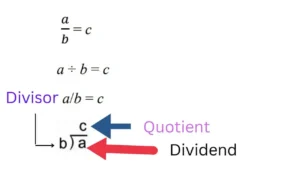Multiplying and dividing decimals means doing multiplication and division of decimal numbers. This can be achieved by doing normal multiplication and then placing decimal points.
Multiplying and dividing decimals: Multiplying decimals

To do the multiplication follow just three steps.
- Do normal multiplication without decimal points
- Count the number of digits after decimal points
- Apply this count to the product and place the decimal point moving from left to right.
Say for example,

Step 1: Multiplying without decimals, 203 x 1 = 203
step2: The number of digits after the decimal point in 20.3 is 1 and in 0.1 is 1. Total number of digits after decimal point = 1+1= 2
step 3: Place the decimal point before two digits counting from right to left which becomes 2.03
If you consider another example of multiplication 0.01 x 0.01.
since there are 2 decimal digit in the first factor (0.01) and 2 decimal digit in the second factor (0.01)—for a total of four decimal digits—your result must contain four decimal digits. 1 x 1 = 1 and 0.01 x 0.01 = 0.0001
How do decimals move when you divide the number?

The above figure explains that a is called the dividend, b is the divisor and c is the Quotient
Two steps that need to be followed to get the division correct

Do the normal division as you do but when you take down the number after the decimal, you should put the decimal point in the quotient.

In the above example, 24/12 gives 2 so write 2 in the quotient
now 6 which is taken down is written after the decimal point in the dividend so put the decimal point after 2 in the quotient and continue the division ahead.
If the above method seems confusing you can write 24.60 as 2460 x 10-2 and then divide 2460/12 and multiply the quotient with 10-2. This should give you the same result

Pingback: Adding and Subtracting decimals - Math Hacks
Pingback: Commutative Property - Math Hacks
Pingback: 3 Techniques to Improve Commutative Property - ClusterBooks - The Books Marketplace
Pingback: Dividing Polynomials 4 Easy Ways To Remember - Math Hacks